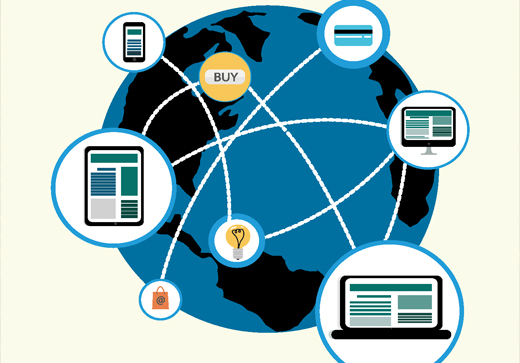
What a payment represents in 2020 will be much different from it does today, as it will represent much more than just the settlement of a transaction or the movement of funds. In fact, the market transformation has already begun, new research results suggest.
Indeed, the competitive landscape will be redefined by the entry of non-traditional providers (hello Apple!), the evolution of new programs and services provided by financial institutions, and the development of strategic alliances that cross traditional sectoral boundaries, according to “Global Payments 2020: Transformation and Convergence” from BNY Mellon.
Already, in addition to Apple, other large technology and social media companies such as Amazon, Google and Facebook also are seeking entry into the payments market. At the same time, new electronic currencies such as Bitcoin offer payment options independent of government control, the report notes.
“In an industry traditionally served by banks, these new and innovative non-bank payment providers are entering the market and rapidly gaining ground,” it notes. ”This development could easily accelerate to a tipping point if banks do not act sufficiently swiftly and decisively, positioning themselves to offer attractive, value-added propositions to both individual and corporate customers.”
‘Largely unrecognizable’
While the report’s authors suggests that any “end-state” post-2020 will be “largely unrecognizable,” they envision it might have integrated global settlement and clearing systems and platform-agnostic channels that allow for maximum client access, flexibility and convenience.
“As a young, ‘tech-savvy’ generation of business leaders emerges, the expectations of retail/consumer and commercial/ corporate end-clients with regard to payments are likely to be far more closely aligned than they are today,” they wrote.
And in all of this, commercial banks can remain key players, but only if they respond quickly enough and with compelling value propositions, according to the report.
Shaped by changing needs
The payments landscape is being shaped by the needs and expectations of retail customers as much as by commercial and corporate clients, as the retail segment’s lead in developing new payments programs and services filters up to the commercial and corporate segments, the report notes. Such clients increasingly expect payments services to include being able to settle anytime, anywhere and across any channel, which implies a high level of interoperability across systems and across geographical markets.
“The next generation of entrepreneurs and business leaders is taking the helm of economic and commercial activity,” Dominic Broom, BNY Mellon Treasury Services head of EMEA sales and relationship management, said in a statement. “To these tech-savvy leaders, having retail banking on their smartphones and tablets is second nature, and they are accustomed to convenient, user-friendly applications that offer speed and flexibility. Such expectations are filtered through to commercial and corporate clients, and banks need to embrace the technology.”
Banks can harness this technology to explore more non-traditional alliances and partnership models, both within financial services and beyond, according to the report. Banks are working in a highly regulated environment, so they could find mutual benefit by working with nonbank institutions such as mobile or social network operators, which tend to be more tech-savvy and agile, it found.
Greater convergence
Besides transformation, there will also be major convergence around products and services linked to payments, technology platforms and clearing capabilities that will be increasingly global in nature and reach, and the operation of global securities and currency markets. Such convergence also will affect regulatory regimes that today are often fragmented and unaligned, according to the report.
Other key drivers of change in global payments include demographics that are reshaping clients’ expectations and access to payment channels; the ascent of China, which is reshaping traditional notions of north-south trade flows; and currency markets and regulatory regimes, which are reflecting the increasingly dominant role of central banks in the management of the global economy, the report notes.
In response to these changes, the report suggests banks identify and engage more strategically in markets and industry segments where payers and beneficiaries are prepared to pay a premium for the reliability and security of bank-payment channels and the integration of those channels into other aspects of treasury and finance management. Moreover, it suggests, banks should target flows related to demographics, such as the compensation and pension flows linked to Baby Boomers, or flows involving the emerging middle classes in China, India and elsewhere.
What banks can do
The report also suggests financial institutions could benefit by targeting such high-growth client segments as small and midsize enterprises, for which advanced payment services can mean survival in the context of cash and liquidity management and trade competitiveness, as well as access to a wider range of commercial relationships.
Banks that understand and position themselves for the increasingly cross-border global nature of payments by providing more efficient and transparent currency-conversion services as an integral part of global payment offerings also will do a better job responding to the threats posed by the changing payments landscape, according to the report.